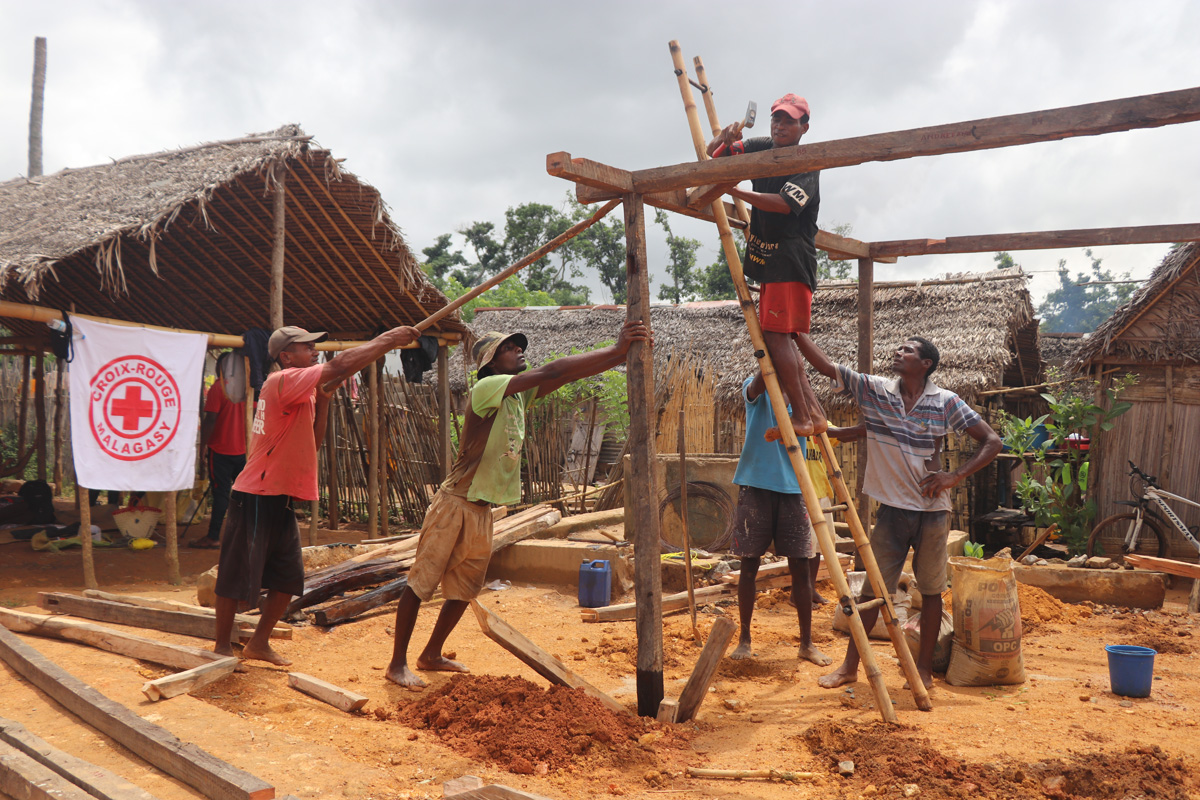Only three days later, the reinforced shelter model went through its first major trial, when Cyclone Freddy made landfall in the very same district. It was with great relief and enthusiasm that communities reported that the shelter models still stood, despite winds of 165km/h brought by the cyclone during the night.
“The shelter we built together confidently withstood the strong winds we heard last night!,” said Tsoto. “Now, the community can see that our techniques are working. I am really willing to encourage and support them with the actual rebuilding of their homes.”
Aimé – who lives in the same village – added: “Beyond the fact that the house is still standing, the carpenters also used local materials. This will make the re-building process of our homes easier.”
To foster resilience and community ownership of the rebuilding process, the Malagasy Red Cross provided additional support to the most vulnerable families participate in the rebuilding process. This assistance takes the form of a cash contribution that covers 10 per cent of the expenses required to build a house that meets the necessary standards. Through these steps, communities are able to take an active role in rebuilding their homes while retaining control and a sense of agency over their own recovery.
Within the scope of an IFRC Emergency Appeal, a total of three reinforced shelter models were built with 21 locally-based carpenters and six assistants. More than 110 volunteers were also trained in “building back safer” techniques in the district of Mananjary, the district of Nosy Varika and the district of Vohipeno.
 Red Cross Red Crescent magazine
Red Cross Red Crescent magazine 









 Tech & Innovation
Tech & Innovation Climate Change
Climate Change Volunteers
Volunteers Health
Health Migration
Migration